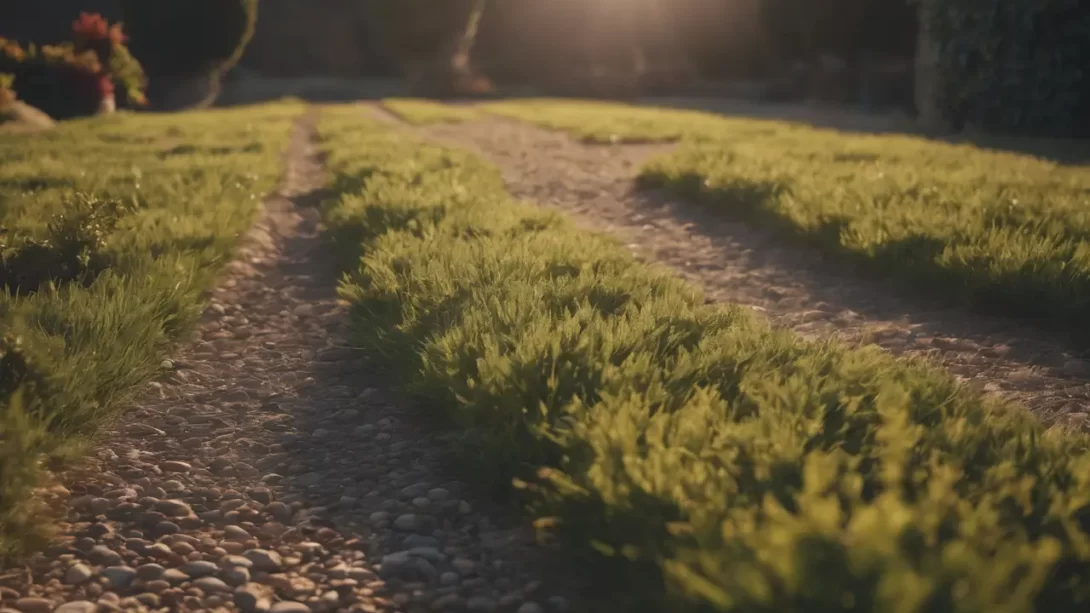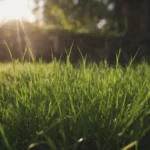Ruts in your yard are not just unsightly; they can also lead to long-term damage to your lawn. Caused by a variety of factors such as heavy vehicles, foot traffic, or water runoff, these depressions can compromise the health and appearance of your grass. Addressing these ruts promptly is essential for maintaining a beautiful and healthy lawn.
The Causes of Yard Ruts
Yard ruts can occur from several sources. Heavy vehicles, like cars or lawn mowers, are common culprits, especially when the lawn is wet. Foot traffic along the same path can also compress the soil over time, leading to ruts. Additionally, water runoff, particularly in yards without proper drainage, can erode soil and create channels. Seasonal changes, such as freeze-thaw cycles, can worsen these issues, making it crucial to understand the specific cause to apply the right fix.
Assessing the Severity of Ruts
Before you begin repairs, it’s important to assess the severity of the ruts in your lawn. Measure the depth of the ruts: shallow ruts are typically less than two inches deep, while deeper ruts exceed this depth. The number and spread of the ruts should also be considered. This assessment helps in determining the appropriate method for repair and whether professional help might be needed for extensive damage.
Tools and Materials Needed
To effectively repair ruts, you will need specific tools and materials. For shallow ruts, a lawn roller may suffice. For deeper ruts, a spade for digging and topsoil or a soil-sand mix for filling are essential. Additionally, you might require grass seed or sod for areas where the grass has been damaged. Selecting the right materials is key; for instance, a soil-sand mix can improve drainage and prevent future compaction.
Step-by-Step Guide to Fixing Ruts
Shallow Ruts (Less than 2 Inches Deep)
For shallow ruts, the repair process is relatively simple. Start by watering the affected area to soften the soil. This makes it easier for the lawn roller to effectively press the soil back into place. Gently roll over the ruts in multiple directions to evenly redistribute the soil. If the grass is damaged, reseed the area or lay fresh sod. Make sure to water the new grass regularly until it’s established.
Deep Ruts (More than 2 Inches Deep)
Deep ruts require a more hands-on approach. Begin by loosening the soil in and around the rut with a spade. Fill the rut with topsoil or a soil-sand mix, slightly overfilling to account for settling. Use a hand tamper or the back of a spade to compact the fill material. This step may need to be repeated to ensure the soil is compact and level with the surrounding lawn. Once leveled, reseed or lay sod over the repaired area.
Reseeding and Lawn Repair
When reseeding, select a grass seed that matches your existing lawn. Spread the seed evenly over the repaired area, then lightly cover it with a thin layer of soil. Water the area gently but consistently, keeping the soil moist until the seeds germinate and the new grass becomes established. Avoid heavy foot traffic on these areas during this period. For larger or more complex repairs, laying sod might be a more viable solution, providing instant coverage and quicker lawn restoration.
Preventative Measures for Yard Ruts
To prevent future ruts, consider implementing measures to protect your lawn. For areas frequently crossed by vehicles or foot traffic, installing stepping stones or a pathway can greatly reduce the impact. In areas prone to water runoff, improving yard drainage can help, such as adding a French drain or regrading parts of the lawn. Regular lawn maintenance, including aeration to reduce soil compaction and promote healthy grass roots, can also strengthen your lawn against the formation of ruts.
Conclusion
Fixing ruts in your yard is not only about improving its appearance but also about preserving the health and integrity of your lawn. Whether dealing with shallow depressions or more significant damage, the right approach can restore your lawn to its lush, level best. By accurately assessing the severity of the ruts, using the appropriate tools and materials, and following the step-by-step guide, you can effectively repair these unsightly blemishes.
Remember, the key to a resilient lawn is ongoing care and prevention. Regular maintenance, such as proper mowing, watering, and aeration, plays a crucial role in keeping your lawn robust and rut-free. Implementing preventative measures like creating walkways or improving drainage can significantly reduce the risk of rut formation in the future.
In conclusion, while ruts in your yard can be a nuisance, they offer an opportunity to enhance your lawn care skills. With the right techniques and a bit of effort, you can not only repair existing damage but also fortify your lawn against future challenges. A well-maintained lawn is a source of pride and joy, and by addressing issues like yard ruts head-on, you ensure that your outdoor space remains beautiful and healthy for years to come.



